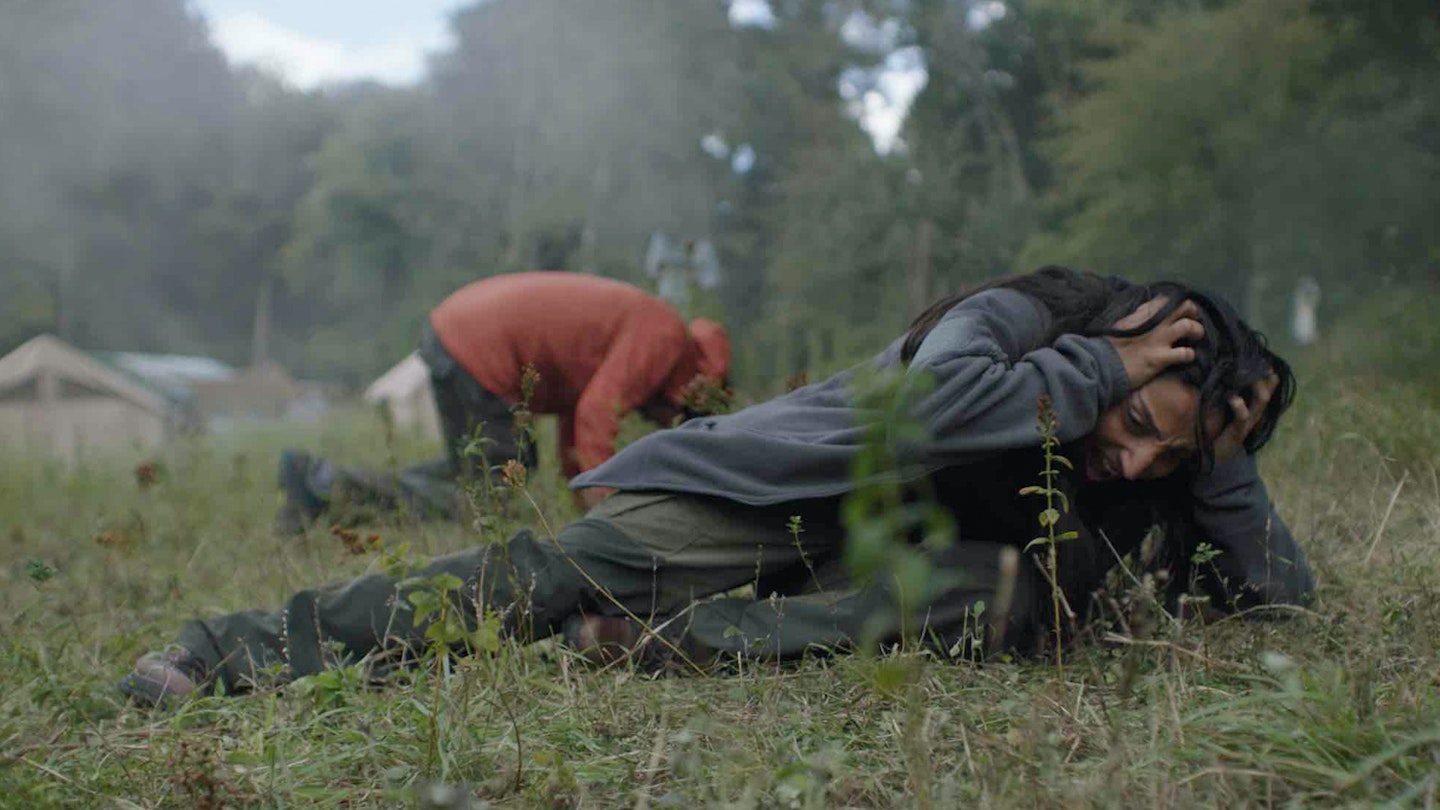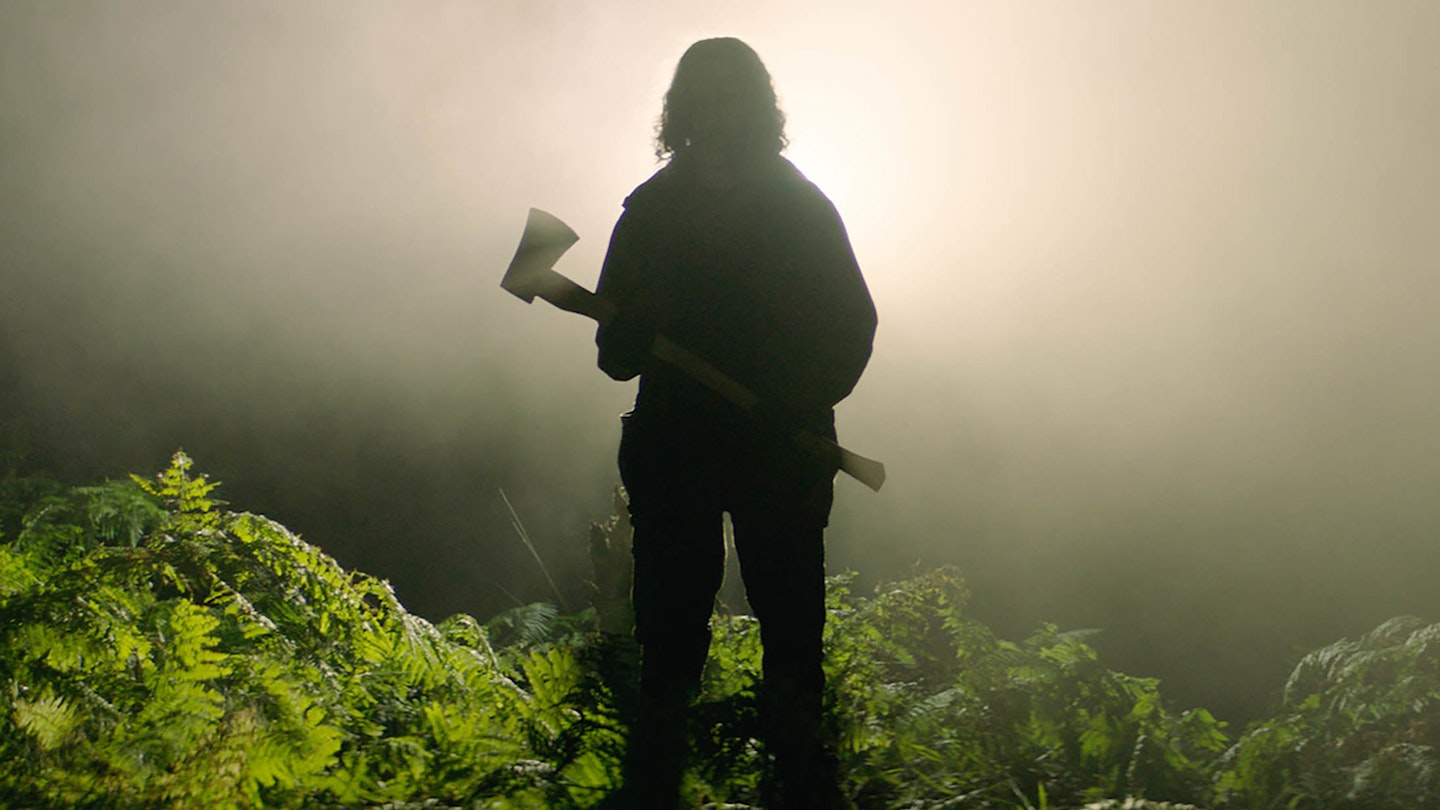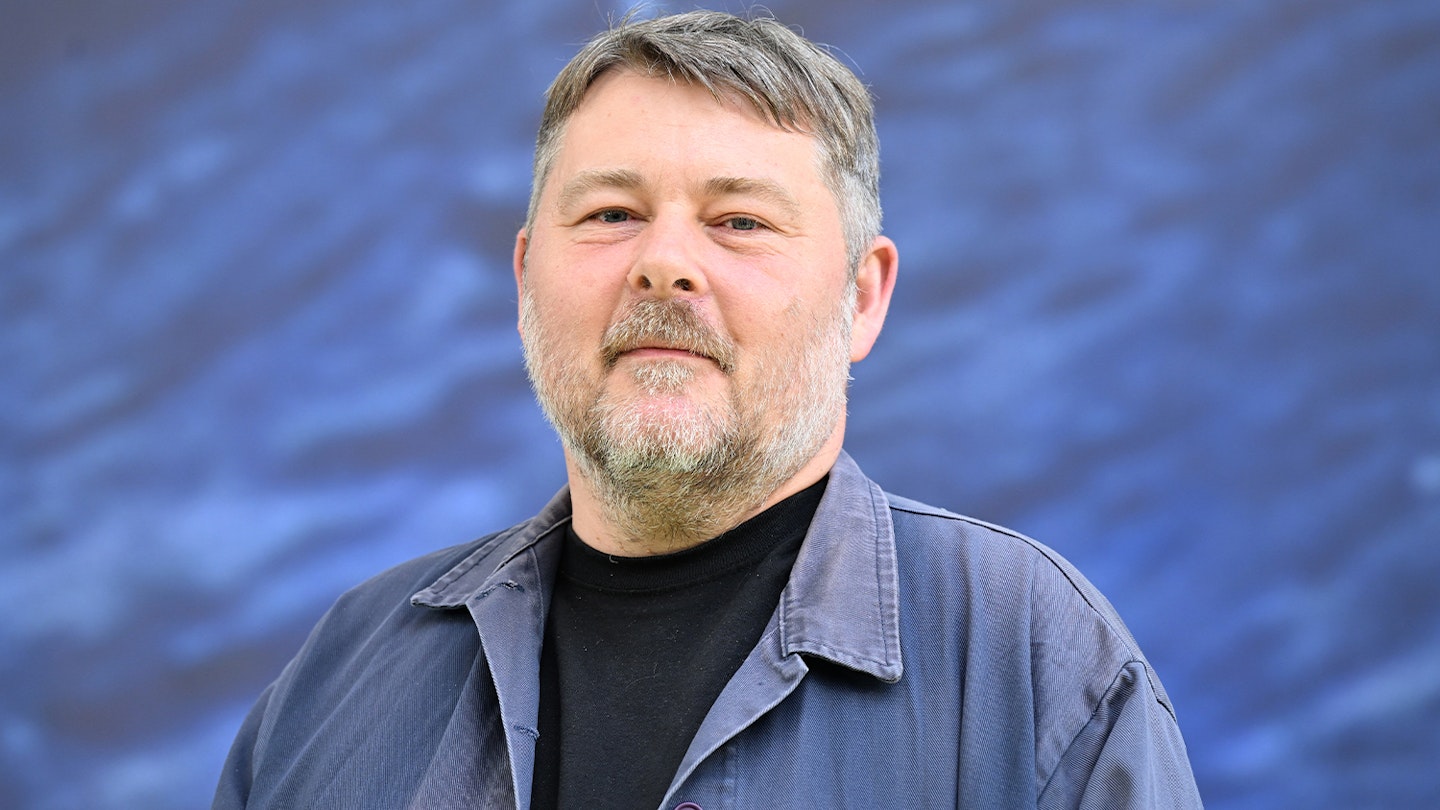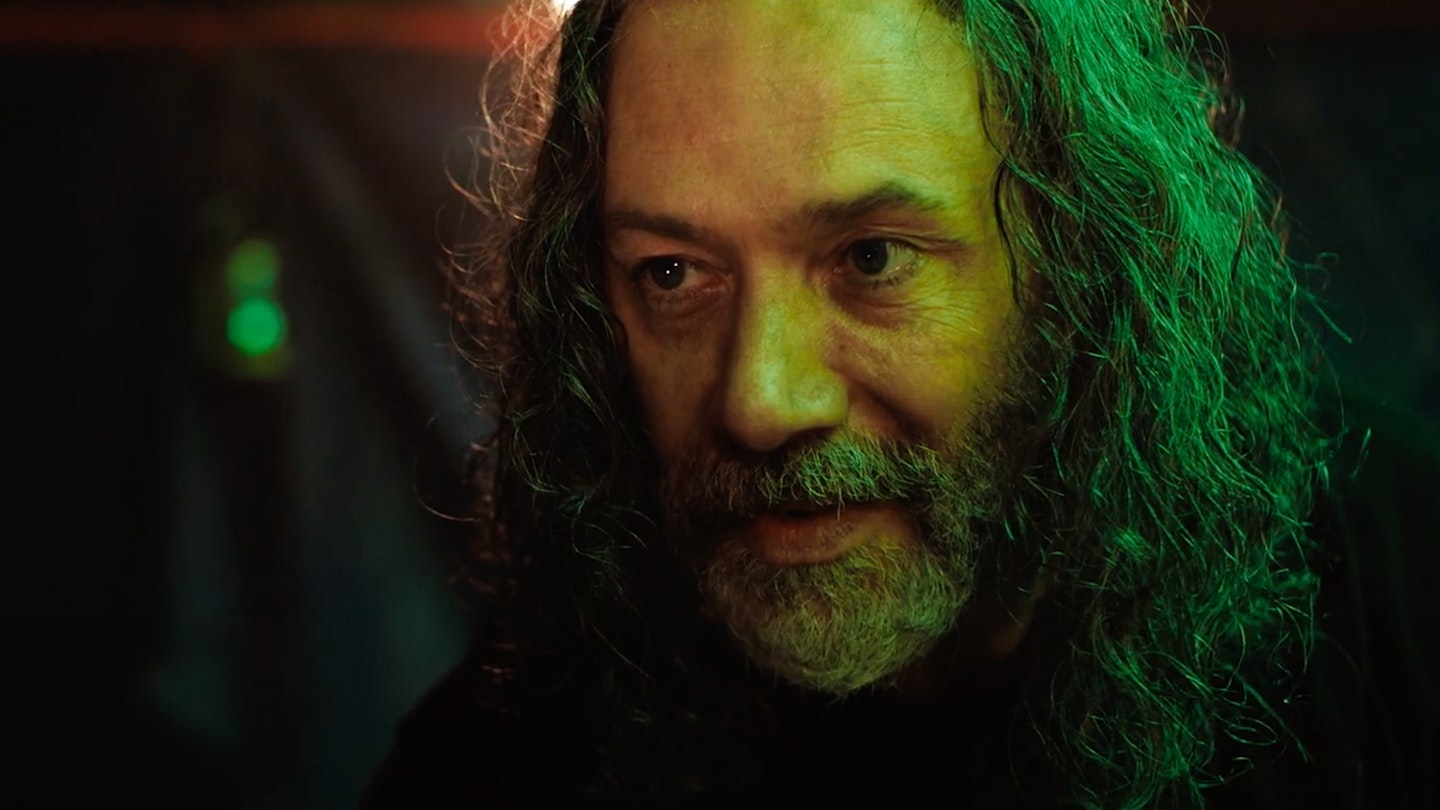In The Earth opens with a monolith and ends with a hallucinogenic trip. Perhaps only Ben Wheatley could reimagine 2001: A Space Odyssey in a drizzly English woodland. After his starry adaptation of Rebecca, Wheatley is back on his bullshit: ambitious high concepts shot with lo-fi verve, ladled with molasses-black comedy, all played out to a throbbing Clint Mansell synth score. Filming during a pandemic plays firmly into Wheatley’s skillset, a filmmaker who finds creativity in constriction. Other filmmakers had to adapt to the stripped-back resources of a pandemic picture; this is Wheatley’s wheelhouse, and In The Earth makes the most of it.

The writer-director-editor sets his stall out slowly and deliberately. Filled with pandemic ennui, scientist Dr Martin Lowery (the likeable Joel Fry) arrives at the remote Gantalow Lodge to take some much-needed equipment to former colleague (and possibly former lover) Dr Olivia Wendle (Hayley Squires). Researching ways to make crop growth more efficient in reputedly mega-fertile soil, Wendle is well-known for her theory that all the trees in a forest are connected, like one gigantic brain, yet she has not been seen for months (the film develops a big Colonel Kurtz energy around her). Lowery is joined on his journey by park ranger Alma (Ellora Torchia), who alerts the newb to the mythology of Parnag Fegg, the pagan folklore of an ancient spirit that supposedly lives in the forest. All seems fine until the pair are ambushed and beaten senseless under the cover of night. This is just the start of their problems. Enter Reece Shearsmith as Zach, a man living illegally in the woods, who gives the movie more unease and tension than a dozen Leatherfaces or Jigsaws. In a career playing unnerving oddballs, Zach might be Shearsmith’s finest.
It’s a visceral experience; part survivalist drama, part slash-and-stalk thriller.
Suffice to say that what follows is a mash-up of twisted mythology, body horror and trippy visuals, all wrapped up in a pointed Covid parable. Amid the lockdown sub-genre (Songbird, Malcolm & Marie, Locked Down), Wheatley’s film best captures the moment, from the details (masks, social distancing and a scene-stealing turn from a lateral flow test) to the anxieties of the age (a discussion about whether things will ever be the same post-Covid; the way isolation engenders a distrust of empirical evidence). But Wheatley also has bigger, more timeless concerns on his mind. In The Earth explores the dynamic between folklore and science — technology as magic and vice versa — and the ways nature might be communicating to — or even through — us. Sometimes the thinly drawn characters feel like cyphers for these ideas, but the cast — especially Torchia and Squires — mostly make it real.
This is not to say that In The Earth is some exercise in cerebral chin-stroking. It’s a visceral experience; part survivalist drama, part slash-and-stalk thriller, filled with intensity and dread, all amplified by wild editing strategies (flash cuts, jump cuts, abrupt cuts to black) and strobe effects to stoke up the atmosphere. Reminiscent of A Field In England’s psychedelia, the final act enters a new realm of madness that offers no easy answers or soothing resolutions. Just the way Wheatley likes it.



